Categories
Subjects
Authors
Artists
Venues
Locations
Calendar
Filter
Done
April 25, 2022 – Review
59th Venice Biennale, “The Milk of Dreams”
Quinn Latimer
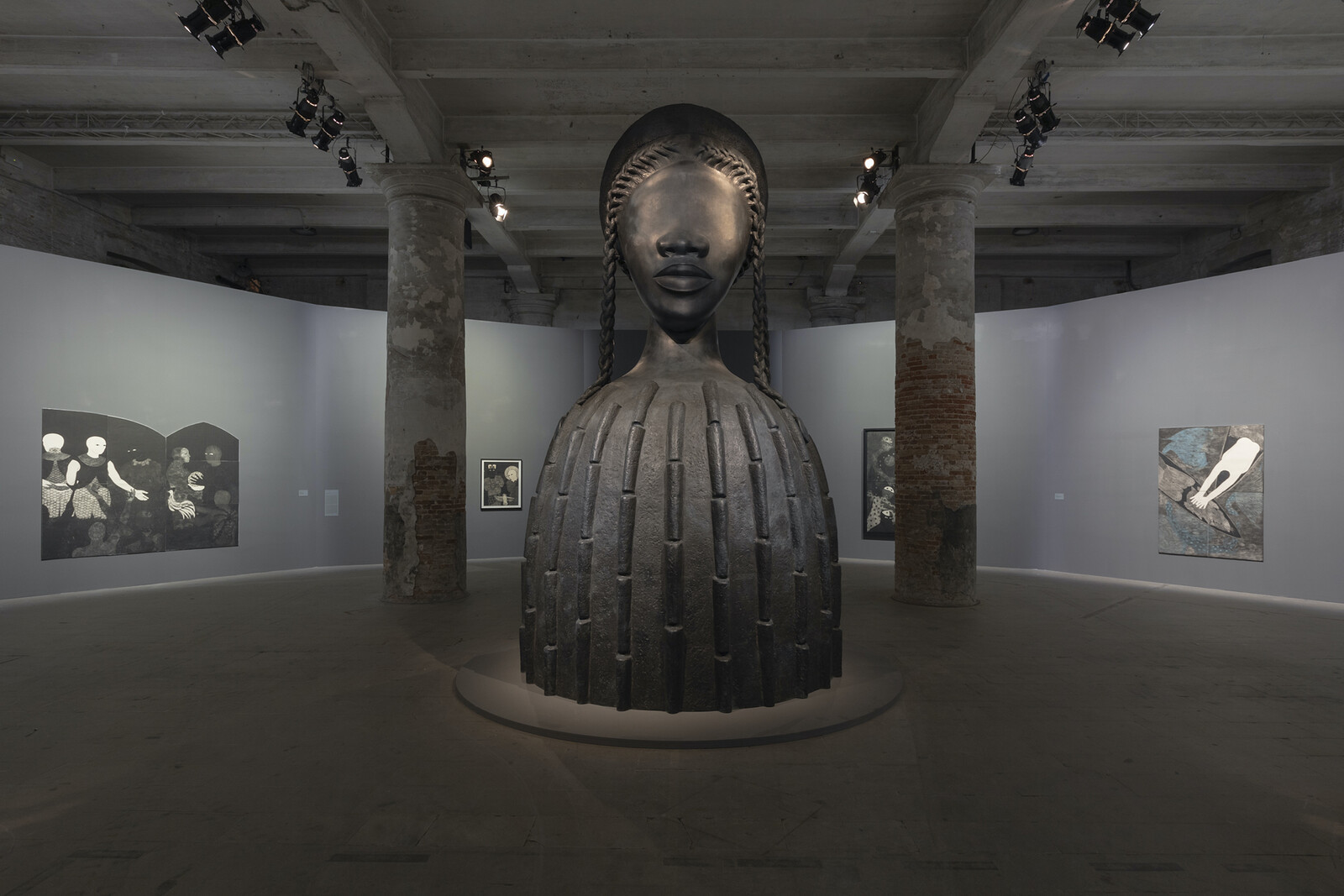
How to make an exhibition about technologies of gender in the year 2022? About bodies that are symbiotic and prosthetic and in solidarity—an extension of ourselves into other receiving forms, whether animal, vegetal, machinic, spirit, land, human, or otherwise—and about an ecosystem in which the body is seen as a vessel of ancestral and speculative relations and active possibilities? That is, at once mutable, vulnerable, hybrid, Indigenous or diasporic, human or non, but ever transforming and telegrammic? Real queries, I know, but stay with me. We were all once stardust, remember.
Take These Eyes
Djamila Ribeiro has written about understanding “the gender category” from non-Eurocentric sources, taking, for example, the female orixás deities in African-origin religions including Candomblé and Umbanda. This is feminist discourse by other “geographies of reason,” with women of care, women of cult, mythical female ancestors, and African diaspora witches who are, she writes, “the antithesis of any denial of behavioral, political, ethical transcendence that women may represent.” Ribeiro notes, precisely: “From them it is possible to think of a practice that transforms the colonial relations present today.” Her words surfaced in my mind as soon as I entered the opening rotunda of Cecilia Alemani’s exhibition in …
April 22, 2022 – Review
59th Venice Biennale, The National Pavilions
Ben Eastham
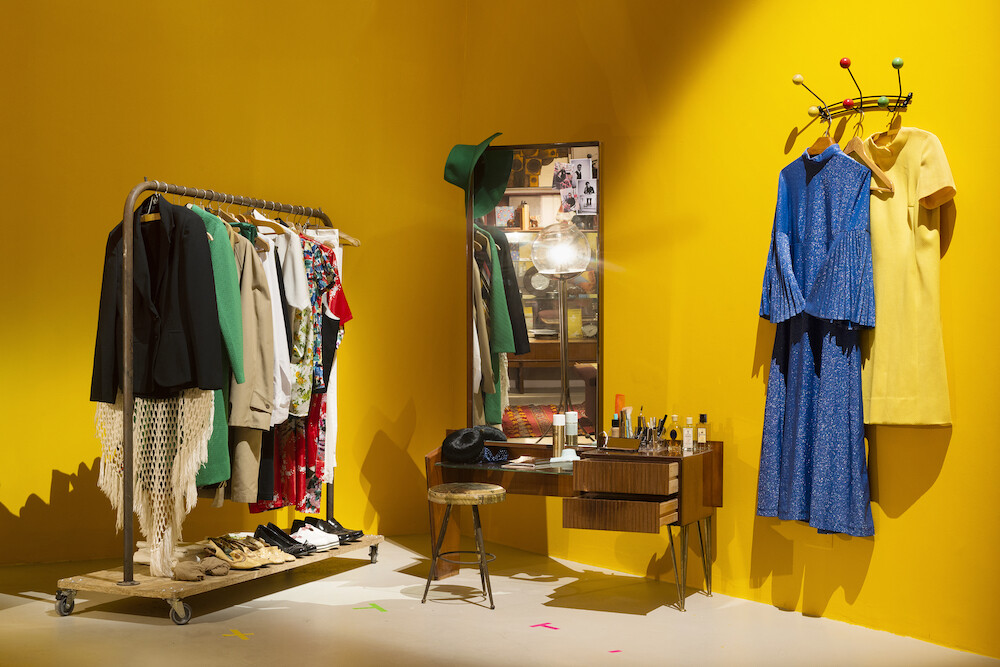
Among the many dizzying contradictions that characterize the Venice Biennale is the persistence, amidst the rhetoric of decentering and decolonization, of a national pavilion format that gives prominence to those western powers considered a century ago to constitute the world order. The issues this raises are complicated, in this year’s edition, by apparently conflicting attitudes to the construction of identity (to be affirmed or broken down) and the violability of borders (to be defended or dissolved, sometimes within the same press release). For all of the anachronism and cognitive dissonance, one purpose of the Biennale’s pavilions might be to drag these contradictions—all of which have “real world” analogues or implications—into the light in order to discuss them.
With its façade transformed by hanging thatch into an homage to vernacular African architecture, Simone Leigh’s attention-grabbing US Pavilion is pointedly titled “Sovereignty.” As a counterpoint to Cecilia Alemani’s surrealist-infused international exhibition, which foregrounds fluidity and category slipping, this assertion of the right to self-determination is striking. The sheer physical presence and self-possession of sculptures indebted to African traditions—precisely and sparsely arranged through the pavilion—communicate an identity that is confident, coherent, and secure in its boundaries. Yet the title also draws attention to …
May 13, 2019 – Feature
58th Venice Biennale, “May You Live in Interesting Times”
Adam Kleinman
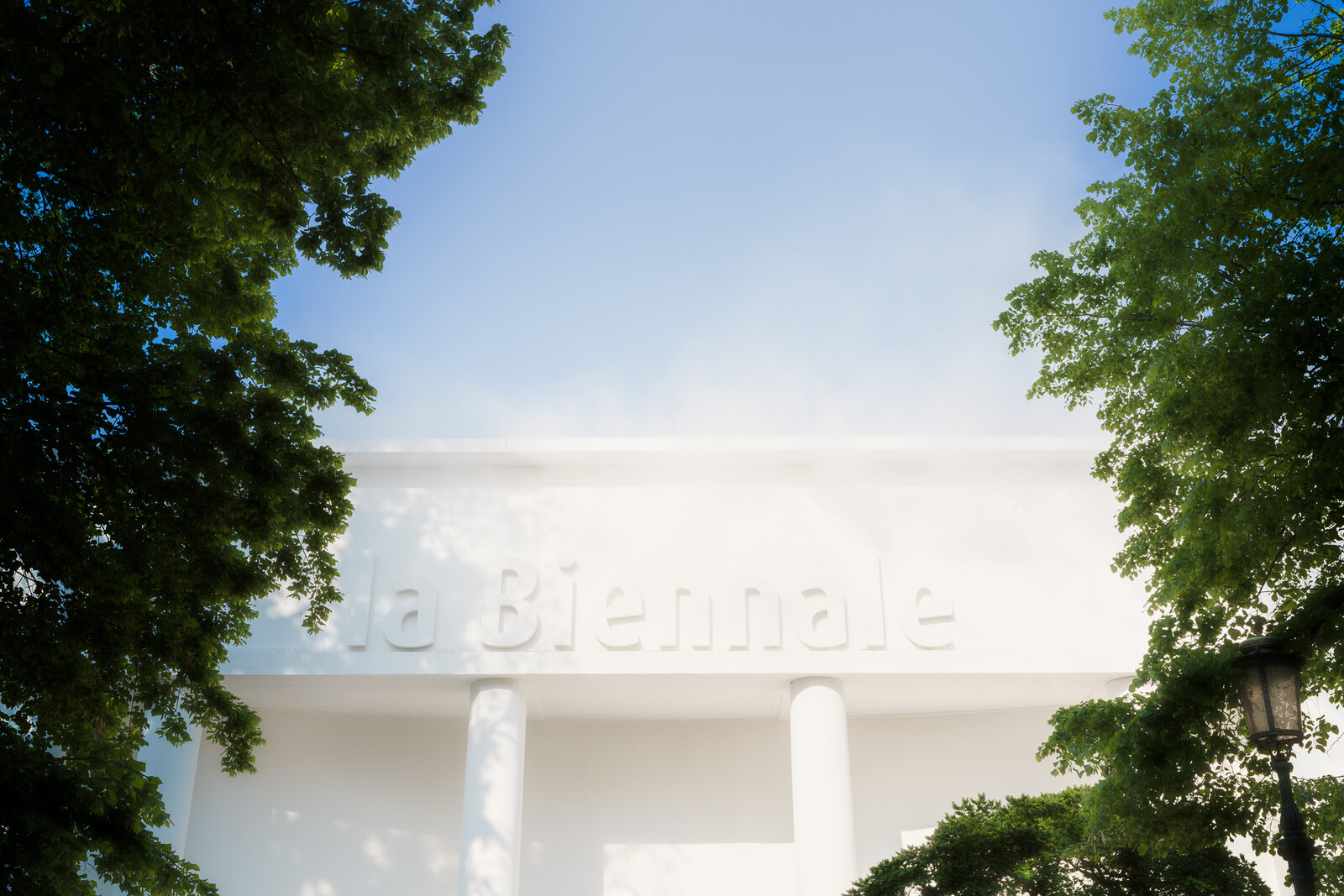
Gemini came a little too early to Venice. While the 58th edition of the Venice Biennale was clearly born under the sign of Taurus, the exhibition’s mood is that of the mercurial twins who oscillate between opposing states of mind. Don’t let yourself be fooled by the exhibition’s title, mired in borrowed orientalist apocrypha, “May You Live in Interesting Times,” ambiguous mirroring is the true structuring principle of the show. To this end, the curator of the international exhibition, Ralph Rugoff, played his two houses—the Arsenale and the International Pavilion in the Giardini—against each other by having each of the participating artists present work in both venues. The effect of this maneuver creates an odd form of creative bookkeeping wherein 79 artists are stretched to perform the work of 158.
Rugoff’s display is likewise dotted by recombinant forms as salient features of works are meant to act as anchors, but end up flattening the art into objects grouped rather glibly by kind or theme as opposed to intention, code, or context. For example, repetitions of sculptures based on the same source material such as Arthur Jafa’s series of chained monster truck tires, “Big Wheel” (2018), that I read as …
July 5, 2017 – Review
Russian Pavilion: "Theatrum Orbis"
Maxim Ivanov
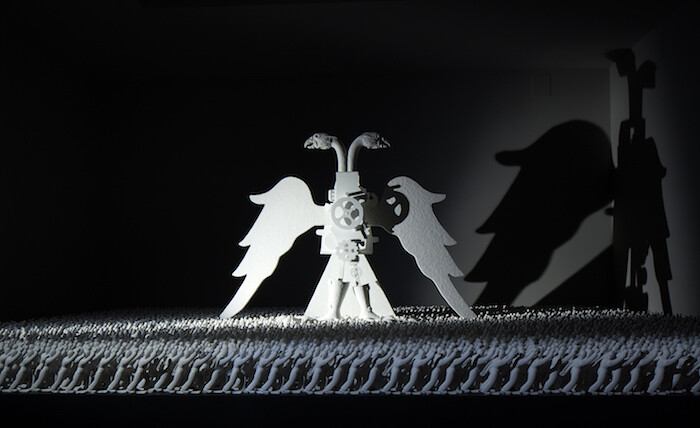
The reign of Stella Kesaeva and the Stella Art Foundation over the Russian Pavilion at the Venice Biennale ended in 2015. Over the course of three biennales, they showed western audiences works by the artists who secured Moscow conceptualism’s place in art history, and transformed it into an export commodity (in the good sense of the word). Moscow conceptualism is not, of course, the equal of Russia’s historical avant-garde, but it can claim second place in the canon. The 2015 Venice Biennale also marked the end of the era of grand narratives in Russian art.
The final exhibition with Kesaeva as commissioner proved that exporting conceptualism had been exhausted. It was clear the Russian Pavilion needed to look for a different way of doing things, to get away from the conservative, spotless presentation of heavyweight canonical art that everyone adores. Ilya Kabakov, after all, was shown in the Russian Pavilion way back in 1993. His friends Andrei Monastyrsky (2011), Vadim Zakharov (2013), and Irina Nakhova (2015) represented Russia at the biennale two decades later. Expectations for the 2017 pavilion were thus considerable. Organizers were faced with the sticky problem of devising a means of representing Russian art that syncs with the …
May 17, 2017 – Review
57th Venice Biennale, “Viva Arte Viva”
Kevin McGarry
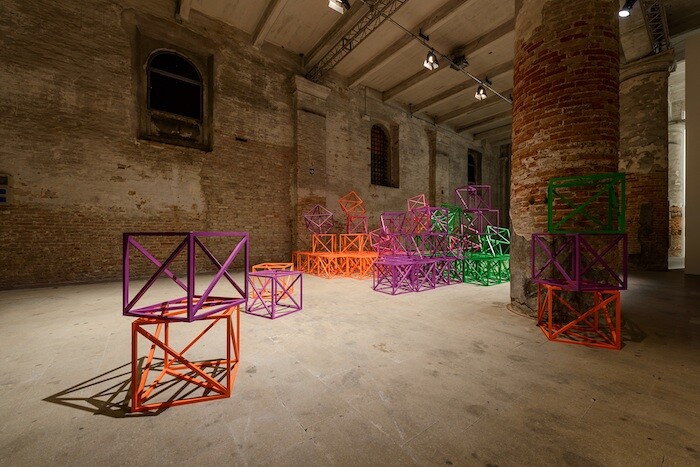
There was widespread suspicion about “Viva Arte Viva” even before Christine Macel’s 57th Venice Biennale opened last week. This year’s edition fell short of gender parity with almost two-thirds of the participants male, fomenting heated critiques on social media upon release of the artist list. Racial metrics were worse; case in point, five of the 120 artists are black. These are normal problems for the Biennale (even if the upheavals of the past two years have shone a spotlight on them), though they remain audacious statements for an institution meant to be representative and contemporary. Even more audacious, some might say, is the absence of a thesis engaged with anything more than the nominal boosterism of art itself as a proxy for humanism.
The morning of the press preview, I checked Instagram and saw that perennial truth-keeper Frances Stark (@therealstarkiller) had shared a still from a video concocted for the Biennale’s website, noting in the caption that it was “made under duress to contribute promotional material” to the show. In the same post the artist wrote she was “uncomfortably in the dark about this year’s Venice Biennale,” unaware of where or how her work (on loan) would be shown. This echoed …
May 13, 2017 – Review
57th Venice Biennale, "Viva Arte Viva"
Barbara Casavecchia
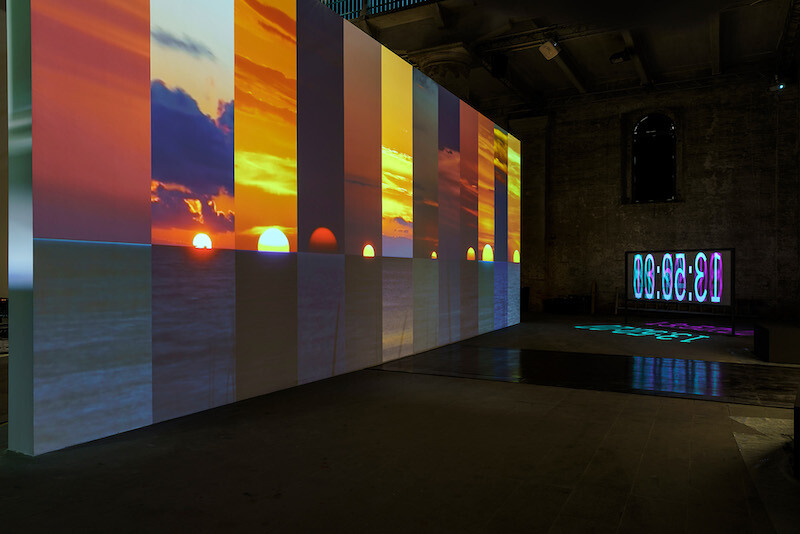
“Viva Arte Viva” is a tautological title. Since a tautological statement is one that is necessarily true on the basis of its circular syntactical structure, it’s logical to assume that Christine Macel, the curator of the 57th Venice Biennale, is asking us to believe that art is alive, and/or that we should all celebrate the celebration of art. Viva (hail) relates also to ovation (as in “Hail to the Chief”) and liturgical acclamation (like hooray or amen). So “Viva Arte Viva” begs for fervor and leaps of faith. After all, the descent of the biennale upon Venice is a 122-year-old cult, celebrated every two years in the same temples (pavilions and palazzos, but also yachts, vaporetti, and bars), with growing numbers of followers and replicas around the world. “The processions, circumambulations, singing, dancing, storytelling, food-sharing, fire-burning, incensing, drumming, and bell-ringing along with the body heat and active participation of the crowd create an overwhelming synesthetic environment and experience. At the same time, rituals embody values that instruct and mobilize participants.”
The brief for the 2017 festivities seems as basic as it is infantilizing: keep it simple. “At a time of global disorder,” Macel writes, “the role, the voice and the responsibility …
May 9, 2015 – Review
56th Venice Biennale—Main exhibition, National Pavilions, Off-Site and Museums
Chris Sharp
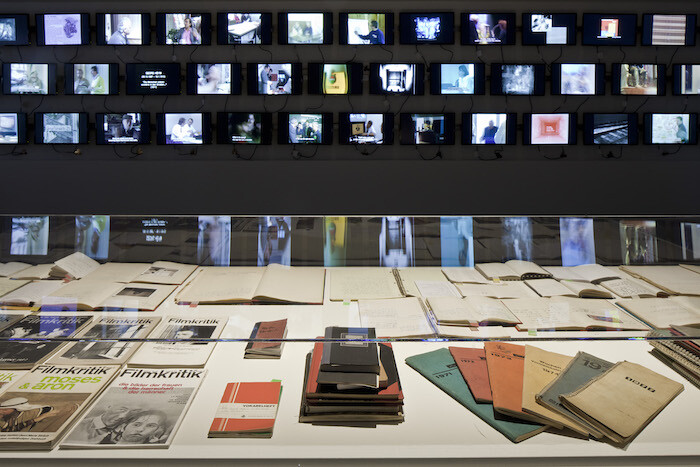
Okay, in the event that you, dear reader(s), are not too tired of the harried Venice musings of the art-agenda corps rearing up in your inbox, here’s a final reflection. Allow me to start with an offensively obvious observation. In case you haven’t noticed, Venice is not particularly adapted to the presentation of contemporary art. In fact, this singular city is probably the least appropriate place to show contemporary art, or art of any kind, and this is from a totally practical point of view. From the aquatic transportation of works to questions of humidity to outmoded issues of national representation, Venice is not merely an anachronism but also, and perhaps more importantly, a point of extravagance without parallel in the global art-circuit calendar. When you learn how much it costs to get on the map even as a collateral event, you understand that the sheer mobilization of monies and resources that attends this multifarious, biannual event is categorically staggering. This mobilization is far from limited to communication as well as the production and transportation of art, but also includes lodging, dinners, and parties. For example, the night of my arrival, I found myself at a dinner for 400 people …
May 8, 2015 – Review
56th Venice Biennale—Main exhibition and National Pavilions
Sabrina Tarasoff
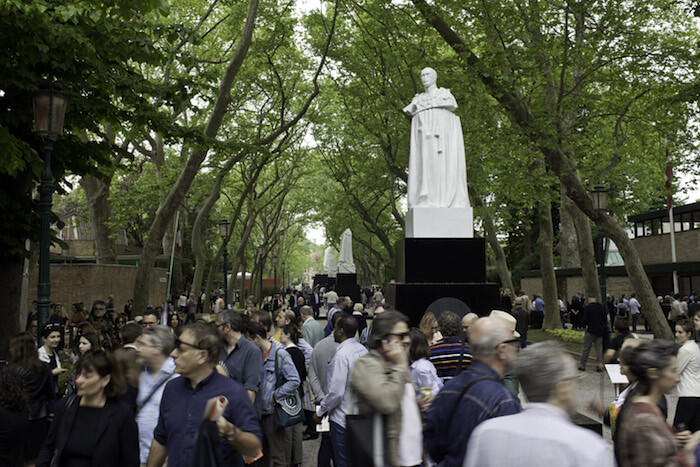
When Kenya announced the artist list for their pavilion for this year’s Venice Biennale, forefronted for the second time in a row by Italian hotelier Armando Tanzini, alongside an astounding nine foreign participants and only one Kenyan, the only appropriate response—as far as I was concerned—would have been something akin to Lee Lozano throwing issues of Artforum into the air, as in her 1969 Throw-Up Piece. Disillusioned by the collusions between art and commerce, and repulsed by those who participated in its occurrence, Lozano’s gesture marked a breaking point. It was a final attempt to ask what, exactly, we—participants in the production of artistic value, which too often comes down to nothing but cultural entrepreneurship—are doing here?
Although copies of Artforum were not thrown around (nor Biennale guides, for that matter), when the Kenyan cultural ministry officials responded to the appointed curators of the Pavilion by calling them “imposters” and formally disassociating themselves from the presentation, a similar point of no return had been reached. The effect was immediate: not only did it mark a critique of the organizing party for having so blatantly neglected to represent their own, but also of the Biennale, which failed in its responsibilities by enabling …
May 7, 2015 – Review
56th Venice Biennale, "All the World’s Futures"
Kevin McGarry

A 2015 exhibition titled “All the World’s Futures” is more likely than not to be bleak (in tone). Earth, in curator Okwui Enwezor’s curatorial statement, is “shattered and in disarray, scarred by violent turmoil, panicked by specters of economic crisis (…) Everywhere one turns new crisis, uncertainty, and deepening insecurity across all regions of the world seem to leap into view.” So the 56th Venice Biennale does not purport to be a catalog of hopeful ways out. Enwezor is quick to acknowledge that the grandiosity of what the institution of the Biennale has evolved into speaks to “the unquestionable allure of this most anachronistic of exhibition models dedicated to national representation.” And while Venice is the most expansive international exhibition in the world of contemporary art, this year it is dwarfed by an analogously outmoded, nation-obsessed spectacle taking place only two hours west: Expo Milano 2015.
This pop-up city on the steroidal scale of twenty-first-century Chinese urbanization, located on the periphery of Milan, where some countries’ pavilions are the size of four-floor department stores—most of whose architectures are garishly ill-conceived—is born of the theme “Feeding the Planet, Energy for Life.” It’s all about food, its culinary varieties and geopolitical complexities. Case …
June 3, 2013 – Review
55th Venice Biennale–Off-Site and Museums
Filipa Ramos
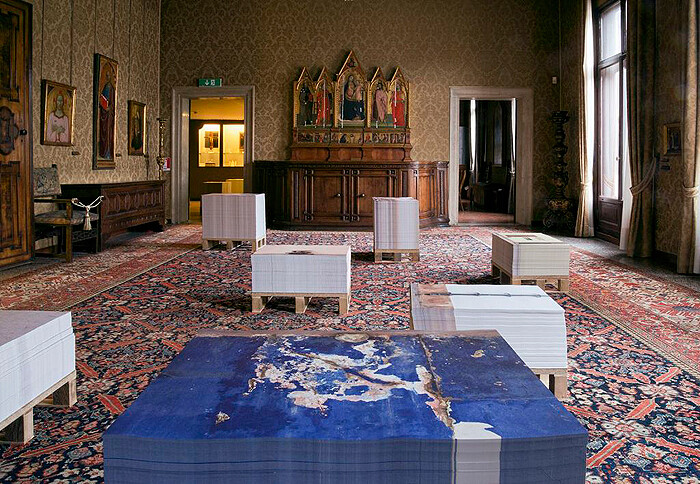
The original purpose of the encyclopedia is to collect knowledge disseminated around the globe (…) and transmit it to those who will come after us, stated renowned encyclopedist Denis Diderot. Following such guidance, this overview of the Biennale outside the Biennale considers its subjects alphabetically. For if there is a vast world outside the Giardini and the Arsenale—with nearly fifty parallel projects occurring concurrently—there is also a limit to what one can see. To such an overwhelming call, we respond with a succinct short catalog of entries definitely worth considering.
A for Angola, C for Cini
How much of the Golden Lion for the best National Participation was due to Edson Chagas’s “Luanda, Encyclopedic City” and how much of it was due to the gallery of Palazzo Cini, which hosts the Angolan Pavilion? This secluded museum that lies in the heart of Venice, halfway between the Accademia and the Peggy Guggenheim Museum, is unknown to most, despite hosting an impressive collection of Renaissance artworks. Nonetheless, aren’t location, strategy, attentive display, and the capacity to dialogue with a context essential elements to producing a good pavilion (that is, a temporary palace of wonder and emotion)? Even if the works of masters such as …
June 2, 2013 – Review
55th Venice Biennale, National Pavilions
Quinn Latimer
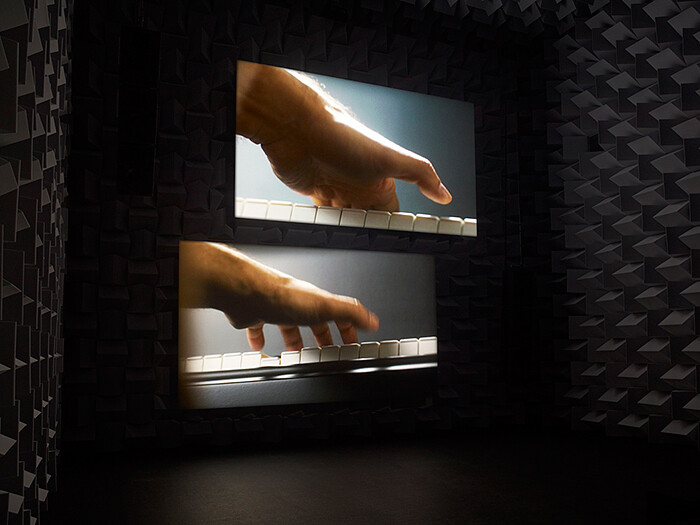
National pavilions can come in all different forms—naturally. Consider, for example, my first night in Venice, where I found myself at a grand palazzo for a dinner collectively hosted by Sadie Coles, representing England; Jose Kuri and Monica Manzutto, representing Mexico; and Gavin Brown and Barbara Gladstone, here representing the US (or New York, at least). The gallerists’ respective compatriots, and others, were well in attendance, isolating, aligning, and signifying among themselves, as nations and nationals tend to do. In the Palazzo Zeno’s beautifully crumbling courtyards and gorgeous baroque halls, archipelagos of small island nation-states arose.
Some on the scene, of course, pledged allegiance to a number of nations, including me. But everyone had seen each other recently, in Mexico City, London, New York, or elsewhere. And everyone was returning to those places after Italy. Thus their cosmopolitanism and nationalism went hand-in-hand: each person was defined not only by their well-traveled itineraries but by the nations they came home to and represented on the road. In this regard, the dinner that night mirrored the Venice Biennale’s eighty-eight national pavilions. Like the dinner party, the pavilion artists representing their respective countries were ostensibly if not exclusively (or really) doing just that; such …
May 31, 2013 – Review
“Il Palazzo Enciclopedico”
Vincenzo Latronico
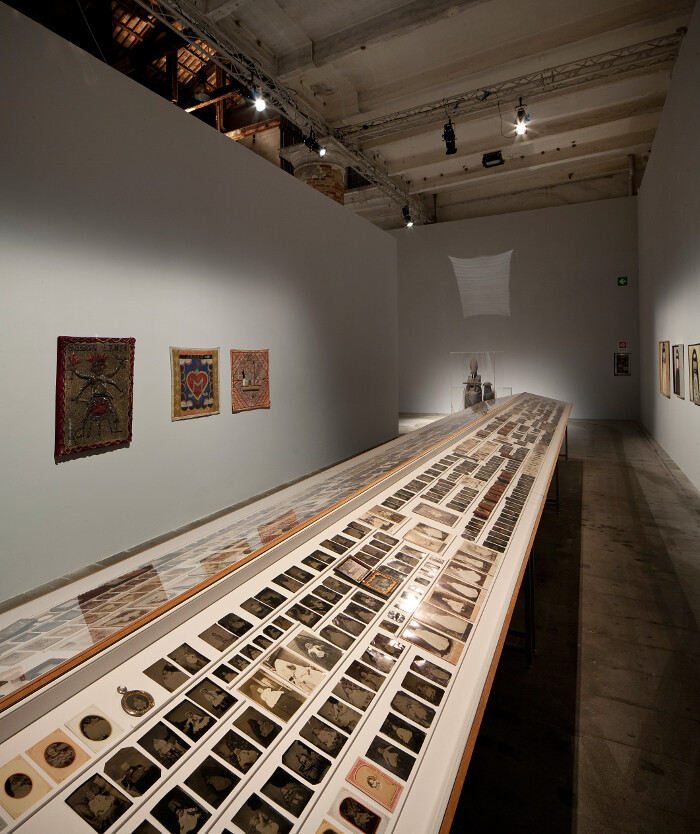
Loosely defined, an encyclopedia is a systematic survey of specific topics. As objective as it might strive to be, such a survey inevitably involves both sides of the epistemic equation: the world—which may or may not resist, or be exhausted by, the categories imposed on it—and the knowing subject—its ambition, or dream, or illusion, of being able to come up with a meaningful set of such categories and actually impose them. The international exhibition at the center of the 55th Venice Biennale, Massimiliano Gioni’s “Il Palazzo Enciclopedico,” is as much about the former as it is about the latter.
It is, in fact, two shows, or rather two variations on a theme. The one at the former Italian Pavilion in the Giardini has a circular structure, both beginning and ending with Carl Gustav Jung’s darkly exuberant Red Book (1914–1930): hundreds of hallucinatory, miniature-like images that the psychoanalyst drew over the span of sixteen years—a rhapsodic mapping of the symbolic unconscious. Here Gioni’s exhibition focuses on the encyclopedia as an idiosyncratic struggle—the impossible, yet nonetheless deeply human attempt at knowing the structures of the world. The part of the exhibition taking place in the Arsenale is linear and suggests a possible evolution …
June 6, 2011 – Review
International Pavilions
Kirsty Bell

With its ludicrous mismatch of scale (83 artists in the main exhibition, 89 national pavilions, 37 collateral events) and logistics (crowds numbering thousands, endless slow-moving queues, and a labyrinthine city navigable only by foot or boat), the Venice Biennale is something like a theater of the absurd. An unsettling sense of urgency and anxiety emerge in the face of the impossible task of seeing the Biennale; an urgency that is paradoxically rarely to be found in the works on view.
Who are the chief players in this three-day theatrical marathon? The curators and commissioners? Perhaps even the artists? More likely, the consensus makers like the jurors who this year awarded the Golden Lion for best National Participation to Germany’s theater director, filmmaker, and notorious provocateur, the late Christoph Schlingensief. Given that theater itself was one of the leitmotifs of the Biennale, this was fitting. The reflective nature of the 2009 Biennale, in which many artists pondered the problematic question of national representation or the hermetic nature of the Giardini itself was gone: this time theater and politics were on the table.
It was no small achievement to so utterly engulf the oppressive, fascist-era architecture of the German pavilion, particularly as the show …
June 5, 2011 – Review
54th Venice Biennale, "ILLUMInazioni – ILLUMInations"
Adam Kleinman
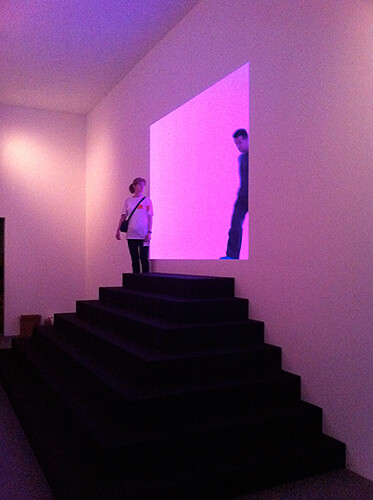
Welcome to Biennale Nation. Like the city of Venice, it’s a bit hard to navigate with its quick twists and idiosyncratic logic; better find an insider or a tour. If you care for an adventure, use the title of the fair’s curated section as a compass: ILLUMInations.
At first reading, it seems that we might be in for a show on the artistic play of light and shadow. And as promised, the exhibition is chock full of phenomenally accented works that wondrously joust with our sensorium; James Turrell’s astounding Ganzfeld APANI (2011), or the artist-duo DAS INSTITUT’s Blocked Radiants (for loana) (2011), and R.H. Quaytman’s suite of paintings I Modi, Chapter 22 (2011). And just as we begin to settle into this mode of inquiry, a blast of interference takes the compass needle for a huge spin, resettling to confront us with strangeness of its own format: ILLUMInations.
Normally the suffix –tion alerts the reader that some process has affected the host word it is tagged to, i.e., illumination is the condition of being lit. But at the Biennale, curator Bice Curiger instead turns a homophonic pun by tying –nations to nations, as in states, in the exhibition literature. …
Load more
